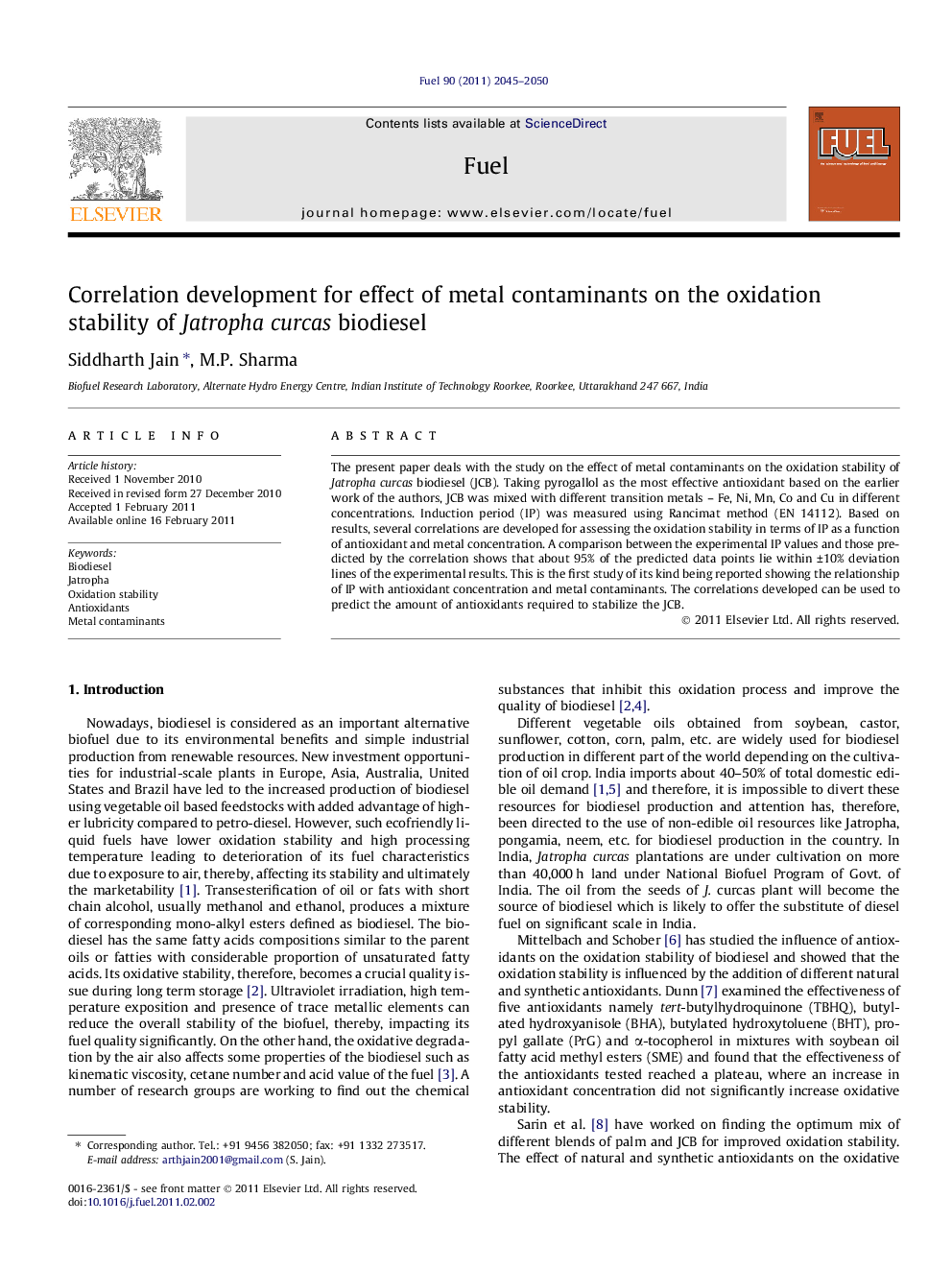| Article ID | Journal | Published Year | Pages | File Type |
|---|---|---|---|---|
| 206779 | Fuel | 2011 | 6 Pages |
The present paper deals with the study on the effect of metal contaminants on the oxidation stability of Jatropha curcas biodiesel (JCB). Taking pyrogallol as the most effective antioxidant based on the earlier work of the authors, JCB was mixed with different transition metals – Fe, Ni, Mn, Co and Cu in different concentrations. Induction period (IP) was measured using Rancimat method (EN 14112). Based on results, several correlations are developed for assessing the oxidation stability in terms of IP as a function of antioxidant and metal concentration. A comparison between the experimental IP values and those predicted by the correlation shows that about 95% of the predicted data points lie within ±10% deviation lines of the experimental results. This is the first study of its kind being reported showing the relationship of IP with antioxidant concentration and metal contaminants. The correlations developed can be used to predict the amount of antioxidants required to stabilize the JCB.
Research highlights► This is the first study of its kind being reported showing the relationship of IP with antioxidant concentration and metal contaminants. ► The correlations developed can be used to predict the amount of antioxidants required to stabilize the JCB. ► It was also found that beyond a concentration of 2 mg/L, IP values became almost constant as concentration of metal is increased. This proves that the influence of metals was catalytic, as even small concentrations of metals had nearly the same effect on the oxidation stability as large concentrations. ► The correlations developed can be used to predict the amount of antioxidants required to maintain the specification of 6 h IP for metal contaminated JCB with reasonable accuracy in the range of parameters investigated.
